BOME and SLERF have ended their crazy rise, and the market has once again experienced and witnessed another round of "gold rush" to get rich. Although the heat wave of MEME has not completely subsided, the market has also briefly recovered some calm.
In addition to lamenting the increase and income of "one day in the cryptocurrency circle, one year in traditional finance", many "old leeks" are discussing a question: "Why is MEME currency so early in this cycle?" According to the sector rotation in the past few cycles, when the popularity of a new concept and new narrative reaches its peak, accompanied by the relay of MEME currency, the flowers are scattered, which is the prelude to the end of the bull market. But in this cycle, the order of sector rotation seems to have been rearranged. MEME currency does not play by the routine and has become the main line in the early and middle stages of this cycle.
In the theory of "value investment", MEME currency and dog currency have always been marginalized, even in the bubble-filled currency circle. But in fact, many people do not understand what MEME is, let alone the difference between MEME coin and Dogecoin.
From the dog pattern of DogeCoin to today's inscriptions, MEME has become a unique cultural symbol and communication method in the currency circle. So, how did these seemingly funny and even absurd cultural elements gain such a prominent position in the crypto world? This article will explore the relationship between MEME and blockchain, as well as its impact on cryptocurrency culture.
1.MEME is the gene
1.1 The origin of the MEME concept
Whenever it comes to the birth and origin of MEME, Richard Dawkins is definitely a person who cannot be avoided.
In 1976, Richard Dawkins first proposed the concept of MEME in his groundbreaking book The Selfish Gene. In the last chapter of The Selfish Gene, Richard Dawkins introduced the concept of "MEME", defining it as a unit of cultural communication, similar to genes in biological inheritance. MEME can be a melody, an idea, a clothing style, a language habit, a technology, or any other phenomenon of cultural communication. They spread from one person to another through imitation, thereby replicating themselves in human culture. The success and survival of MEME, like genes, depends on their replication accuracy, persistence, and their "attractiveness" or utility to the host.
In more popular terms, MEME can be a stalk, a joke, an emoticon, etc., a subculture formed after widespread dissemination. And MEME coin is a way to value this subculture.
With the rise of the Internet and social media, MEME has become an important part of global cultural exchange, and its speed and scope of dissemination far exceed Richard Dawkins' original intention. Today, MEME, with its humorous and satirical form, not only quickly spreads entertainment and information, but also plays an important role in shaping public opinion and cultural phenomena, especially in the fields of cryptocurrency and blockchain technology.
It is worth mentioning that in order to commemorate Dawkin's birthday on March 26, the community specially launched a MEME coin called "Dawkoin". Dawkin shared the news on social media without showing any resistance or disgust.
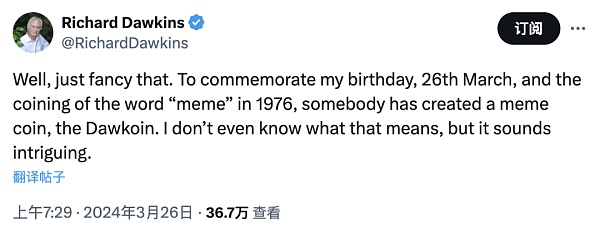
1.2 Bitcoin is the earliest MEME
"In a sense, all crypto tokens have MEME content, but the content is different. More than 50% is the norm." This is the view recently expressed by Blue Fox Notes, one of the earliest media in the blockchain industry. If we look at it from 0-100, the MEME content represented by pepe and doge is more than 99.9%; AI has 90% MEME content; BTC L2 has 80% MEME content; Defi has 30-50% MEME content.
So, can Bitcoin also be said to be the earliest MEME?
We all know that in January 2009, on a small server in Helsinki, Finland, Satoshi Nakamoto invented the Bitcoin system and mined the first block, which is also called the "Genesis Block", and the first 50 Bitcoins were also announced. Technically speaking, Bitcoin is the key to opening the door to the blockchain, relying on cryptography, distributed storage, consensus mechanisms and other technologies that have gradually matured over the past half century.
But nowadays, when people mention Bitcoin, they don't just discuss its technical algorithms. As the first successful cryptocurrency, the philosophical meaning behind Bitcoin, the anonymous founder Satoshi Nakamoto, and the spirit of fighting against the traditional financial system have given it a meaning beyond technology.
So from this perspective, Bitcoin itself is the earliest MEME, which represents the pursuit of power, freedom and system change. This symbolic meaning goes beyond its function as a currency and has become a symbol of a cultural and social movement.
Some people also say that MEME coins are "attention economy", and the more attention-grabbing MEME coins are, the better MEME. After 15 years of development, after the price broke through the historical high of $71,000, the market value of Bitcoin has jumped to $1.398 trillion, surpassing silver ($1.379 trillion) and becoming the eighth largest asset in the world. The percentage of the total market value of cryptocurrencies represented by Bitcoin has reached 49.8%, and Bitcoin has a strong dominant position in the crypto industry.
With the passage of the Bitcoin ETF at the beginning of this year and the rise of the Bitcoin ecosystem, more and more traders and investors are "returning to basics" and focusing their attention and liquidity on the Bitcoin ecosystem.
Bitcoin is the most attention-grabbing token in the crypto industry. From this perspective, isn't Bitcoin a MEME?
1.3 Inscriptions and NFTs: MEME "derivatives"
Since MEME can be regarded as a form of gene expression, MEME will definitely be differentiated. This can also be found in the "The Selfish Gene" by Richard Dawkins, the origin of MEME mentioned in the previous article: the similarities between MEME and genes in the transmission and evolution mechanisms, both of which are transmitted through the replication process, both experience selection pressure, and mutate under certain conditions.
Looking back at the leading MEME coin in the currency circle, DogeCoin was originally created as a light-hearted version of the concept of Bitcoin, with the popular "Doge" MEME (a picture of a dog named Shiba Inu, accompanied by inner monologue-style text) as its logo. Its founder did not expect that this joke-based currency would be "favored" by Musk and eventually become the largest MEME coin in market value today.
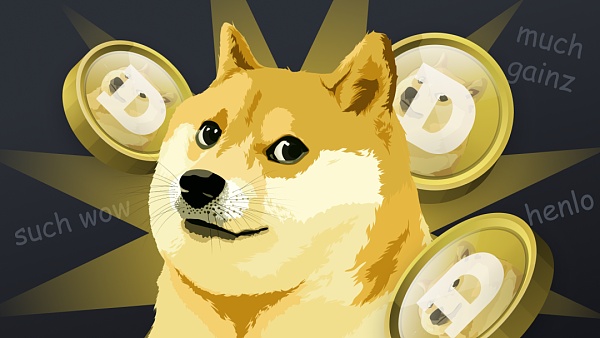
After twelve years, the crypto industry has developed a set of accustomed logic. Project owners who have created new concepts and new narratives have embraced and tied up with VC institutions, "pulling hair" and brushing airdrops to warm up, and then making various arrangements to let the secondary market take over. In this bull market, only TIA and SOL are good projects in the minds of old leeks - they have a team, good VCs, Binance listings, and the track has expectations of hype.
While all this should continue according to common sense, the MEME track has undergone a series of mutations and derivatives, and the inscription as a "spoiler" was born. The emergence and popularity of all "inscriptions" in the Bitcoin ecosystem are completely unexpected.
Since its birth, "Inscription" has naturally carried the community spirit of "fair launch" and "first is first", which happens to be the slogan of MEME. Since its birth in March, prejudice has been closely associated with the Bitcoin ecosystem, but it seems that it has never given up persuading everyone: "If you are biased, let the Bitcoin ecosystem rise until you have no prejudice."
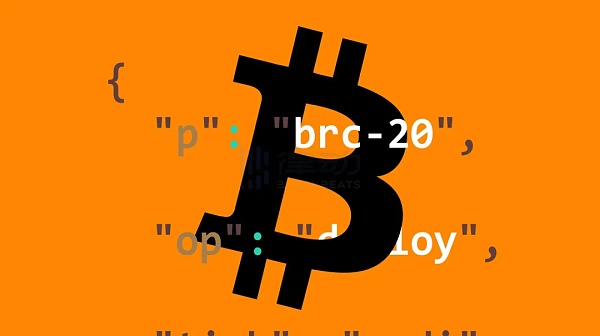
The cost of printing an ORDI (1 including 1,000 coins) is between 2 and 3 US dollars. Based on the current price of 60 US dollars for 1 ORDI, the current price of one is 60,000 US dollars. A year has passed. If it has not been sold so far, it is an investment that has increased by more than 20,000 times at the current price.
The inscription is not the first variation and derivation of MEME. The diversity of MEME can also be reflected in the NFT track. As the biggest new narrative in the last cycle, NFT has also experienced a round of bull and bear. NFT leader BAYC once fell below 13 ETH, not to mention the current situation of more NFT artists without capital support, so they are also looking for various ways out for themselves.
It can also be seen from the recent hot BOME and SLERF that the cultural value that MEME coins bring to holders can also feed back the liquidity of NFT to a certain extent. Although the forms presented are different, the cultural attributes spread by NFT and MEME coins are essentially the same.
In addition to this broader form of derivation, we can also see a series of cultural derivatives on some more specific MEMEs, such as Pepe the Frog.
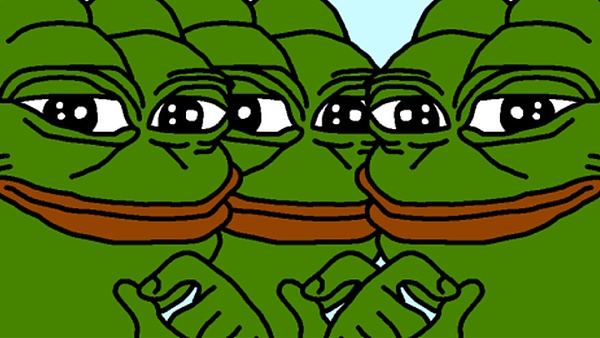
This image was originally just a character in an online comic by cartoonist Matt Furie in 2005, but then it evolved into a widely recognized MEME symbol on the Internet. Unlike those MEMEs with clear creators, Pepe the Frog gathers a community of countless anonymous artists behind them, who create a variety of Pepe images that play a variety of roles in different cultural contexts and social media platforms.
The evolution of Pepe the Frog demonstrates a unique phenomenon in MEME culture: how a single image can give rise to a large and diverse cultural ecology. This cultural derivation is not just a simple act of copying the original image, but a process involving creative reconstruction and cultural reinterpretation.
2. The changing narratives of the coin circle, the iron-clad MEME culture
When we delve into the nature of MEME and its relationship with blockchain, we find that the two have jointly built a unique cultural and emotional ecosystem in the crypto world. Blockchain is not only a technological innovation, it has also become a huge emotional field. MEME is not just an entertaining stalk, but also plays an important role in shaping market narratives, attracting community participation, and driving the value of cryptocurrencies in the blockchain industry.
2.1 The coin circle is a magnifying glass for emotions and narratives
Where there are people, there are rivers and lakes, and where there are rivers and lakes, there are emotions.
The coin circle has crazy bubbles and K-lines that jump up and down. It is not only a gathering place for funds, but also a magnified emotional pressure cooker.
From investors' passion for future technologies to fear and greed for market fluctuations, blockchain, as an emerging technology and financial field, has amplified the influence of these basic human emotions, thereby affecting market dynamics and investment decisions.
MEME is naturally capable of conveying emotions. From enthusiasm to panic, in the form of humor, satire, or even exaggeration, MEME can quickly spread among communities, triggering emotional resonance, thereby invisibly affecting the direction of the market.
In a short period of time, a successful MEME can attract a lot of attention and discussion, thereby promoting investors' purchasing behavior and leading to a short-term rise in prices. This phenomenon is particularly common in the crypto market, where market sentiment can often affect price fluctuations to a large extent.
I remember Yuval Noah Harari once said in his book "Sapiens: A Brief History of Humankind" that Homo sapiens originally exchanged interpersonal information with each other through "gossip" and methods, and knew each other's ins and outs by commenting on others, thereby establishing a stable and close interpersonal organization.
Later, people formed a common imagination through "storytelling" to build more general trust, such as religion, country, currency, company, etc. Similarly, individuals in the crypto community can also form a strong group identity and goals through shared MEME and narratives.
This trust based on common imagination is the key factor for MEME to generate price in the currency circle, and it is also the reason why it can attract a large number of currency circle investors and users to participate.
2.2 MEME does not need a public chain, but a public chain needs MEME
From BTC to Solana chain, and later TON chain and Base chain, every popular public chain needs MEME coins to encourage and even create MEME culture.
The most representative one is Anatoly, co-founder of Solana. On the opening day of the Solana Community Annual Summit last year, which was Halloween in the West, Anatoly appeared in a green dinosaur costume, becoming the most unique and eye-catching presence at the summit. Anatoly stood in front of the crowd and introduced himself: "I'm Anatoly, and I'm a silly dragon". After saying this, Anatoly smiled embarrassedly, and the audience in the entire venue was also amused.
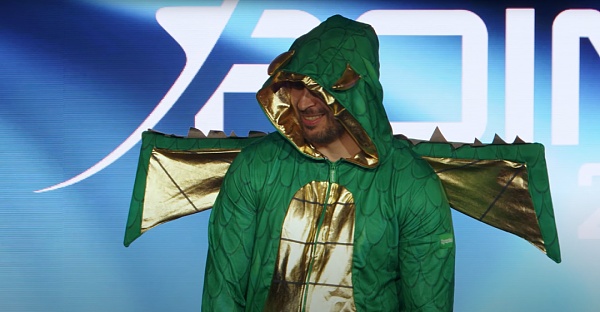
Everyone knows the story afterwards. Silly became the hottest MEME coin at that time. The community rediscovered that it was really smooth to trade coins on Solana. The "Ethereum Killer" returned to the community's attention and became the "SBF Selection".
After Solana, everyone found that it is feasible for public chains to build brand recognition and community cohesion through MEME. A strong community built around a specific MEME can effectively promote the project, attract new users, and enhance the project's market position.
And now we can see that TON chain and Base chain are also eager to get a share of the trading liquidity of MEME coins. TVL has reached a new high, and the on-chain activity and on-chain transaction volume have also increased exponentially. The TON Foundation has also publicly announced that it is recruiting MEMECOIN ecological leaders.
2.3 Have we finally disenchanted various concepts?
A recent joke: "Seeing the superposition of concepts such as zk+DEPIN+rollup+ai, VCs in the currency circle can't help but feel excited." Behind this joke, we can't help but think: Do we really have a deep understanding and disenchantment of various concepts in the field of cryptocurrency?
The continued popularity of MEME is like a sarcasm against the game set up by these so-called core circles. This sarcasm not only questions the technology itself, but also deeply criticizes the blind enthusiasm of the entire cryptocurrency market for new technologies and its neglect of its substantive applications.
"I can't understand it anyway, so I might as well speculate on MEME" The old leeks in the community seem to be overwhelmed, and the new leeks are even more confused. Under the rapid iteration of the currency circle narrative, MEME culture has flourished. The rapidity of BOME's listing on Binance has made many crypto projects "break the defense". After years of hard work, they have not been able to be listed, but BOME did it in three days.
Back to the questions that the community has often asked recently: "Is MEME the end of blockchain?" Or "Value investment is dead, MEME is immortal?" Although these questions seem absolute and even a little extreme. But we have to admit that the biggest role of blockchain in the next ten years is still speculation, which may be the truth.
 JinseFinance
JinseFinance
 JinseFinance
JinseFinance JinseFinance
JinseFinance JinseFinance
JinseFinance Alex
Alex JinseFinance
JinseFinance JinseFinance
JinseFinance JinseFinance
JinseFinance Bernice
Bernice Cheng Yuan
Cheng Yuan 链向资讯
链向资讯